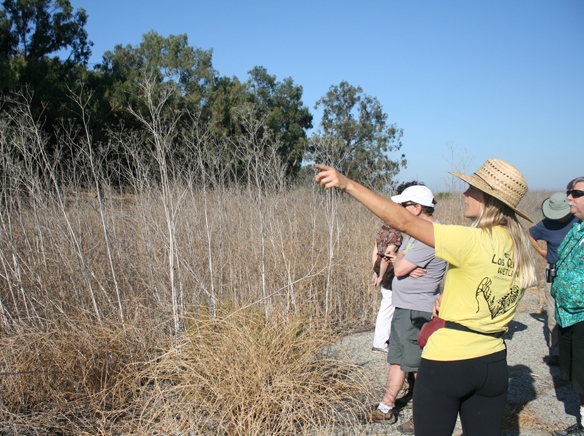
Monthly tours of the Los Cerritos Wetlands have returned on the heels of the release of a restoration plan that maps out some of the needs of the wetlands in order to restore it to some of its original functionalization. The current wetlands area encompasses approximately 503 acres. Of that, 116 acres are now owned by the Los Cerritos Wetlands Authority. The remaining 337 acres are still owned by other entities.
The goal of the LCWA is to begin the restoration process to eventually bring the wetlands back to a more natural state. That would include enhancing tidal flows that would enhance plants and animals that are dependent on the salt marsh. In the past 100 years, encroaching factors such as fill in land for farming and oil production have altered the natural tidal flows.
“The nearly 2,400-acre estuary was severely altered by filling, channelization of waterways, and diking starting in the early 20th century,” the restoration report states.
The Los Cerritos Wetlands Habitat Restoration Plan, prepared by Coastal Restoration Consultants, maps out some of the history of the wetlands area and recommends a framework for how to approach the restoration.
“The hope is that the restoration projects will be self-sustaining and provide an ecosystem for plants and wildlife to thrive with limited management,” said Eric Zahn, Principal Restoration Ecologist for Tidal Influence.
The restoration plan also takes into account the impending sea level rise that is expected in coming years. Low level tidal marsh areas are likely to get covered and higher weedy upland areas would take on salt marsh features. The loss of transition upland areas could create problems due to the loss of their current functions. The restoration plan must take these ‘tradeoffs’ into account.
“At its root, the process of designing ecological restoration projects is about making informed decisions of how to balance the myriad tradeoffs to optimize the accomplishment of the project’s goals and objectives,” the report states.
With the approval of the restoration plan and completion of Environmental Impact Reports, the Los Cerritos Wetlands Authority is in a position to make some significant impacts in restoring the wetlands. One important factor in resorting the area to its more natural state will be when the adjacent power plant ceases its flow-through cooling system, which pulls water from the channel to cool the plant.
The plant is moving towards new technology before the end of this decade and freeing up the water from the Haynes cooling channel would offer a big influx of water into the marsh. That is a major hurdle the LCW is looking to get over.
“One of the biggest things we’re trying to do is reintroduce tides,” Sally Gee, of the Rivers and Mountains Conservancy, said.
With the LCWA, which started in 2006, now in control of 166 acres and also working with the other controlling interests that control the remaining 337 acres, the wetlands might be in the best position to remain open space and function nearly as it once did.
“I think there is broad support from the community and cities to restore these wetlands as much as possible,” Gee said.
September’s Raptor Ramble tour followed the path beneath the hill and Heron Point neighborhoods and also pointed out how some of the ancient native people used the area as their home. The next tour will be the Turtle Trek on Saturday, from 8 to 10 a.m. at the PCH and 1st Street entrance on the Seal Beach side of the San Gabriel River. Saturday’s tour will follow the river in the hopes of spotting Pacific Green Sea Turtles that live in the river.
For more information or to RSVP contact Elizabeth at elizabeth@lcwlandtrust.org. Learn more about the wetlands at www.lcwlandtrust.org.



